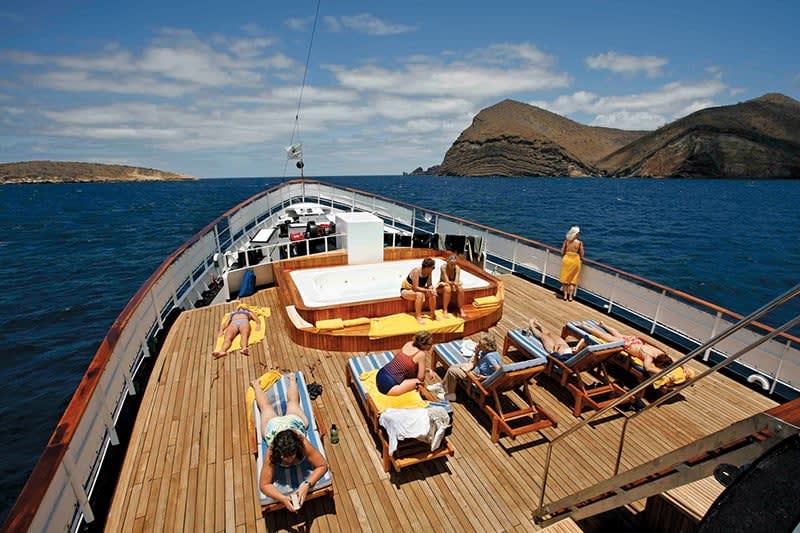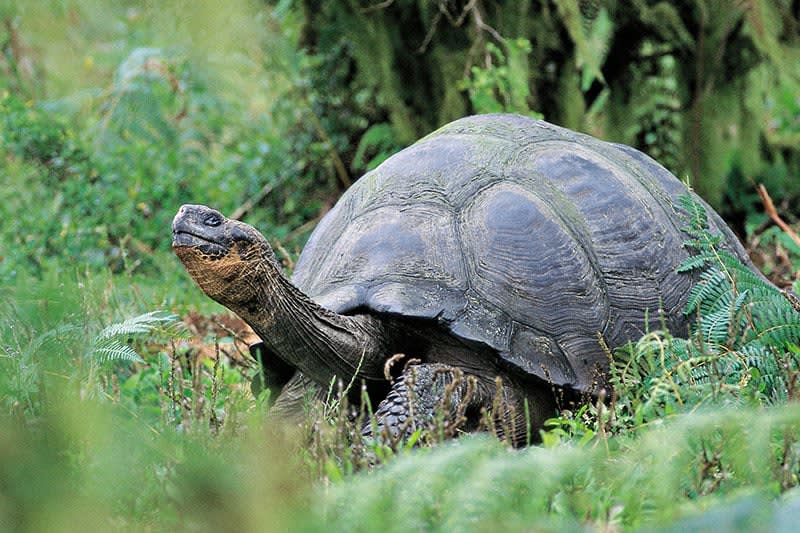Earlier this year, baby tortoises were spotted on the Galapagos Island, of Pinzón. This is incredibly exciting, especially to Quark voyagers, because wild baby Galapagos tortoises have not been seen on the island for over a century.
At Quark, we take pride in making exploration travel accessible to anyone with an adventurous spirit. As such, we’re excited to extend this to our new Galapagos Islands expeditions, as well!

Evolution small ship expedition to Galapagos
Homeland to a variety of determined species
The Galapagos Islands are a small collection of islands off the coast of Ecuador, and home to many unique species of animals, such as the Galapagos giant tortoise. Galapagos tortoises are one of only two species of giant tortoise on the planet.
The tortoise was brought to near extinction by the rats European explorers inadvertently brought to the islands with them, and by the people who followed. Now, thanks to the dedicated and passionate conservation efforts of the Galapagos Conservancy and others, not only are there wild baby tortoises on Pinzón Island, but giant tortoises have been re-introduced to the island of Santa Fe, where they were wiped out over 150 years ago.

Seeing giant tortoises in the Galapagos
Galapagos tortoises live only in the equatorial region, on the islands named by the Spanish explorers who discovered them. In fact, giant tortoises, which can live more than a century, only inhabit a select few of the islands of the Galapagos archipelago. Traveling with Quark on your Galapagos cruise, you will be certain to visit the tortoise’s preferred islands, such as Isabella, San Cristobal and, of course, Pinzón.
Since they sleep as many as 16 hours a day, getting a good look at one is a foregone conclusion, once you know where they live. There are actually two main types of Galapagos giant tortoise, and you’ll want to see both.
The larger Galapagos tortoise – the domed tortoise which has a high, domed shell – prefers the larger islands, like Isabella Island and Santa Cruz Island, where higher elevations grow plentiful vegetation low to the ground.
The smaller type of Galapagos tortoise is referred to as the saddleback tortoise, due to the shape of its shell.
The saddleback tortoise is the type of tortoise the Galapagos Islands were actually named after, since “galapagos” literally means saddle, in Spanish. Saddleback tortoises prefer the smaller, arid islands, like Española and Pinzón. There they feed on taller vegetation, such as cactus pads. During dry seasons fresh water can become quite scarce on such islands, so Galapagos tortoises have developed the ability to hold water in the base of their necks and their bladders for extended periods of time. Their extremely slow metabolism, combined with sleeping up to 16 hours a day, results in the ability to go months without eating.
Giant tortoises lounging in the shade
For nature-lovers and wildlife photographers, there’s an aspect of the Galapagos tortoise lifestyle that is quite accommodating. Rather than spending a great deal of time in the ocean hunting fish or squid, like many smaller aquatic tortoise species, giant Galapagos tortoises are vegan–they are herbivores–and eat only plants. These tortoises spend the majority of their time on land, lounging under the shade of a shrub, or burrowed into a cool, relaxing mud bath on the larger islands, where swampy areas exist.
The situation today is win-win, for both the tortoise and the adventurers who are fascinated by this rare and ancient animal.
The economic impact of ecotourism has made it worthwhile for governments to set aside money and land for conservation efforts aimed at protecting these fragile species. In the end, these remarkable efforts provide rare opportunities to encounter fascinating species such as the Galapagos tortoise.
Want to meet a Galapagos tortoise in person? Take a look at one of various Galapagos Islands tours here.









